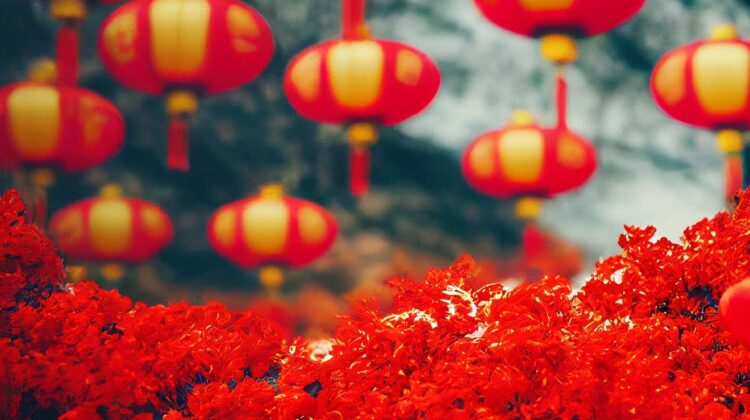
Harmony and Heritage: The Enchanting World of Asian Festivals
Asian Festivals: Celebrations of Heritage and Harmony present an alluring tableau of vivid hues, resonant harmonies, and deeply ingrained traditions that meander through the elaborate fabric of Asian culture. These festivals transcend mere celebrations; they epitomise a harmonious synthesis of past and present, spirituality and community, enabling participants to immerse in an experience that transcends temporal and spatial bounds. Each festival narrates a distinct saga, intertwining ancient myths and legends with modern life, forging an unbreakable connection between generations. From the resplendent celebration of Diwali in India, which bathes the nights in a million lights, to the mesmerising pageantry of Chinese New Year, adorned with dragon dances and firecrackers, these festivals epitomise the profound cultural heritage and unity within diversity that Asia embodies.
Diwali, hailed as the Festival of Lights, is celebrated by millions of Hindus, Sikhs, and Jains across the globe. It marks the triumph of light over darkness and good over evil, commemorating Lord Rama’s return to his kingdom after a 14-year exile and his victory over the demon king Ravana. The festival spans five days, each day holding its own significance. Homes are meticulously cleaned and adorned with oil lamps and rangoli, intricate designs crafted from coloured powders and flowers. Families gather to perform pujas, or prayers, to deities such as Lakshmi, the goddess of wealth, and Ganesha, the remover of obstacles. The exchange of sweets and gifts fortifies familial bonds, while fireworks illuminate the night sky, symbolising the joy and exuberance of the occasion.
In China, the Lunar New Year, also known as Spring Festival, is the most paramount traditional festival. It heralds the advent of a new year on the lunar calendar and is a time for family reunions, feasting, and various cultural activities. The festival extends over 15 days, commencing with the New Year’s Eve dinner, known as the reunion dinner, deemed the most significant meal of the year. Traditional dishes such as dumplings, fish, and rice cakes are prepared, each symbolising prosperity, abundance, and progress. The streets come alive with vibrant parades, featuring lion and dragon dances, believed to ward off evil spirits and usher in good luck. Red lanterns adorn homes and public spaces, while red envelopes filled with money are given to children and unmarried adults, symbolising good fortune and prosperity. The festival culminates with the Lantern Festival on the fifteenth day, where people gather to release lanterns into the sky, symbolising the letting go of the past and the welcoming of the future.
In Japan, the cherry blossom festival, or Hanami, is a venerable tradition that celebrates the transient beauty of cherry blossoms. This festival dates back over a millennium and is deeply embedded in Japanese culture. Hanami involves congregating with family and friends under blooming cherry trees to enjoy picnics and admire the delicate flowers. The ephemeral nature of cherry blossoms, which bloom for only a brief period, is a poignant reminder of life’s impermanence, a concept deeply rooted in Japanese aesthetics. During Hanami, parks and gardens across Japan are adorned with cherry trees in full bloom, creating a breathtaking spectacle that attracts both locals and tourists. Traditional music and dance performances enhance the festive atmosphere, while food stalls offer seasonal delicacies such as sakura mochi, a sweet rice cake wrapped in a cherry blossom leaf.
In Thailand, the Songkran festival marks the Thai New Year and is celebrated with a nationwide water fight. Songkran is derived from the Sanskrit word “Sankranti,” meaning transformation or change, and signifies the sun’s entry into the zodiac sign of Aries. Traditionally, the festival involves visiting temples, offering food to monks, and pouring water over Buddha statues as a sign of purification and renewal. However, in recent years, it has evolved into a lively and exuberant event, with people taking to the streets armed with water guns and buckets to douse each other in water. The splashing of water is believed to wash away bad luck and sins, allowing participants to start the new year afresh. Songkran is also a time for family reunions, with many Thais returning to their hometowns to spend time with their loved ones.
In Bali, the Nyepi festival, or Day of Silence, is a unique and introspective celebration that marks the Balinese New Year. Nyepi is a day of complete stillness and silence, with the entire island coming to a standstill. No lights are turned on, no one steps outside their homes, and even the airport shuts down for the day. This period of quiet reflection is intended to cleanse the mind and soul, allowing individuals to connect with their inner selves and seek spiritual renewal. The day before Nyepi, known as Tawur Kesanga, sees the island erupt in a flurry of activity, with elaborate processions and the Ogoh-Ogoh parade, featuring giant papier-mâché effigies of demons. These effigies are paraded through the streets and then burned, symbolising the purification of the island from negative influences.
In Vietnam, the Tet Nguyen Dan, or Lunar New Year, is the most significant festival and marks the arrival of spring. Tet is a time for family reunions, paying respects to ancestors, and welcoming the new year with various customs and traditions. Homes are meticulously cleaned and adorned with peach blossoms, kumquat trees, and red couplets inscribed with auspicious phrases. The preparation of traditional foods such as Banh Chung, a square sticky rice cake filled with mung beans and pork, is a central aspect of Tet celebrations. The first visitor to a home on the first day of Tet is believed to determine the family’s fortune for the entire year, making this an important ritual. Fireworks light up the sky, while lion dances and traditional music performances add to the festive atmosphere.
In South Korea, the Chuseok festival, also known as Korean Thanksgiving, is a major harvest festival celebrated with family gatherings, feasting, and ancestral rites. Chuseok is a time to give thanks for the bountiful harvest and to honour ancestors with Charye, a ceremonial offering of food and drink. Families travel to their hometowns to perform ancestral rites at the gravesites of their forebears, cleaning the tombs and offering food, wine, and flowers. Traditional foods such as songpyeon, a type of rice cake filled with sesame seeds, chestnuts, or sweet red bean paste, are prepared and shared. Folk games, traditional music, and dance performances, such as Ganggangsullae, a circle dance performed under the full moon, add to the festive spirit.
These festivals, each unique in its customs and significance, underscore the rich cultural tapestry of Asia and highlight the enduring importance of heritage and community. They provide a platform for preserving traditional practices, fostering social cohesion, and celebrating the diverse yet interconnected nature of Asian societies. In an increasingly globalised world, these festivals serve as a reminder of the value of cultural heritage and the need to preserve and celebrate the traditions that define our identities. As we delve deeper into the essence of these festivals, we uncover the universal themes of renewal, gratitude, and the triumph of good over evil, themes that resonate across cultures and time. The celebration of these festivals not only strengthens the bonds within communities but also offers an opportunity for cultural exchange and mutual understanding. For those who partake in these vibrant celebrations, whether locals or visitors, the experience is an immersive journey into the heart of Asia’s rich and diverse cultural heritage, a journey that enlightens and inspires, fostering a deeper appreciation for the intricate mosaic of traditions that shape our world.
Author: Donglu Shih
Expert in Asian culture and economics. She collaborates with major companies in the field of international relations. Collaborates with The Deeping on Asian political topics

